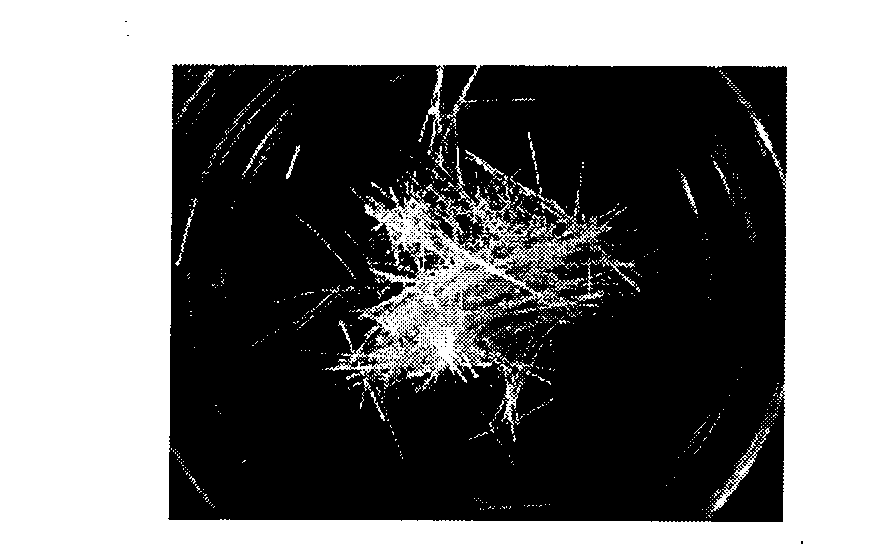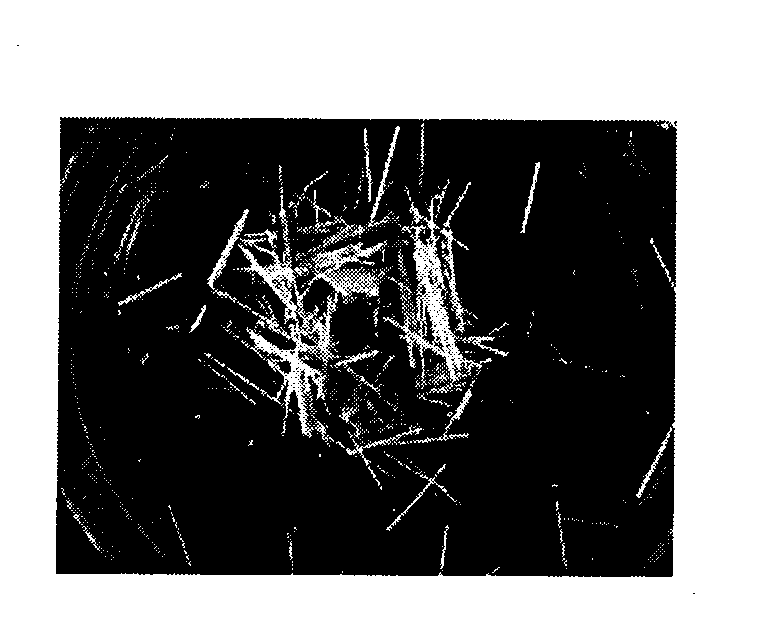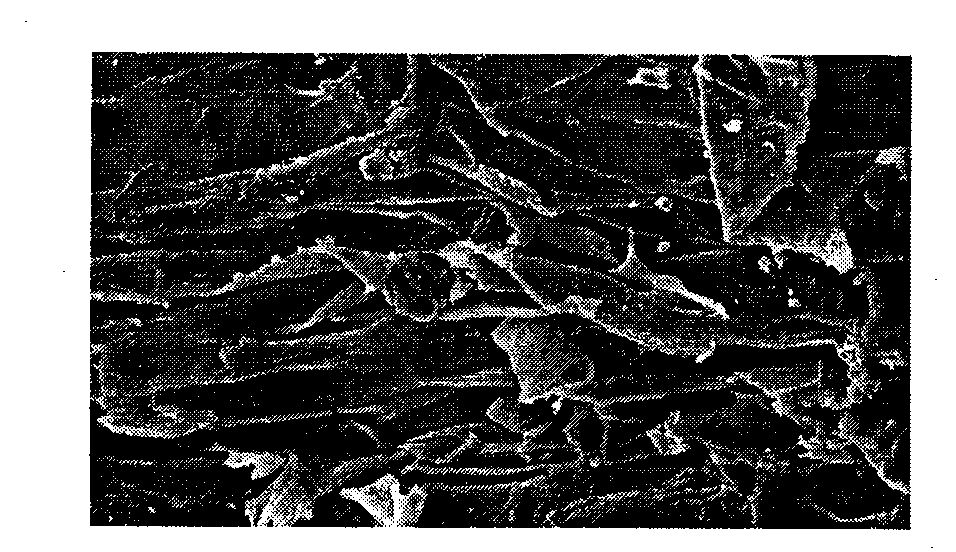Bacillus subtilis and application thereof in sisal hemp degumming
A Bacillus subtilis, degumming technology, applied to the application of sisal degumming, in the field of Bacillus subtilis, to achieve the effects of low production cost, shortened degumming time and high yield
- Summary
- Abstract
- Description
- Claims
- Application Information
AI Technical Summary
Problems solved by technology
Method used
Image
Examples
Embodiment 1
[0037] Embodiment 1: Enrichment and screening of sisal degumming bacteria
[0038]Red Star Farm in Zhanjiang City, Guangdong Province collected 9 kinds of soil samples from sisal production sites, weighed 1.00g each, added them to a triangular flask filled with 99mL sterile water and an appropriate amount of sterilized glass beads, oscillated evenly to obtain a bacterial suspension, and took 0.5mL Put the bacterial suspension into the beef peptone enrichment medium, cultivate it for 1 day, then inoculate the bacterial solution from the enrichment medium into the degumming medium, cultivate it at 30°C and 150r / min for 3 days, and observe whether there is degumming phenomenon .
[0039] In order to stabilize the degumming performance, domesticate the mixed flora with degumming effect, that is, cycle degumming, the specific method is as follows: the degumming liquid with degumming effect after 3 days of degumming is transferred to the enrichment medium for 1 day, and then transfe...
Embodiment 2
[0040] Embodiment 2: the taxonomic identification of bacterial strain
[0041] According to "Bergey's Bacteria Identification Manual" (Ninth Edition) and "Common Bacteria System Identification Manual", B2 bacteria grow in flocculent form in liquid medium, the cells are rod-shaped, mobile, and Gram staining is positive. There are spores, the spores are cylindrical or oval, and their physiological and biochemical characteristics are most consistent with Bacillus subtilis (Bacillus subtilis), and they do not grow at 50°C, but their colony morphology is different from the common Bacillus subtilis colony morphology. At the same time, its 16S rDNA sequence (submitted to GeneBank, No. EF639849) was homologously compared in GenBank, and the results showed that the strain B2 had a high homology with Bacillus subtilis, with a homology of 99%. Biological characteristics are: rod-shaped bacteria, positive Gram staining, flocculent growth in liquid medium, spores, columnar or oval, aerobic...
Embodiment 3
[0042] Embodiment 3: xylanase enzyme, pectinase activity assay in degumming
[0043] Since pectinase, hemicellulase (mainly xylanase) and cellulase degrade the glycosidic bonds of the substrate to generate products containing reducing end groups, the commonly used reducing sugar determination method-DNS method is used.
[0044] Pectinase (xylanase) can hydrolyze the substrate pectin (xylan) to generate aldose such as galacturonic acid (xylose), which is produced by co-heating with 3,5-dinitrosalicylic acid Brown-red amino compound, the amount of its reducing sugar is directly proportional to the color depth of the reaction solution containing the colored amino compound, its absorbance is measured at 540nm, and the enzyme activity of pectinase (xylanase) can be calculated.
[0045] (1) DNS reagent
[0046] Dissolve 6.3g of 3,5-dinitrosalicylic acid in 400mL of distilled water, gradually add 21g of sodium hydroxide, then add 185g of potassium sodium tartrate tetrahydrate, 5.0g ...
PUM
 Login to View More
Login to View More Abstract
Description
Claims
Application Information
 Login to View More
Login to View More - R&D
- Intellectual Property
- Life Sciences
- Materials
- Tech Scout
- Unparalleled Data Quality
- Higher Quality Content
- 60% Fewer Hallucinations
Browse by: Latest US Patents, China's latest patents, Technical Efficacy Thesaurus, Application Domain, Technology Topic, Popular Technical Reports.
© 2025 PatSnap. All rights reserved.Legal|Privacy policy|Modern Slavery Act Transparency Statement|Sitemap|About US| Contact US: help@patsnap.com



